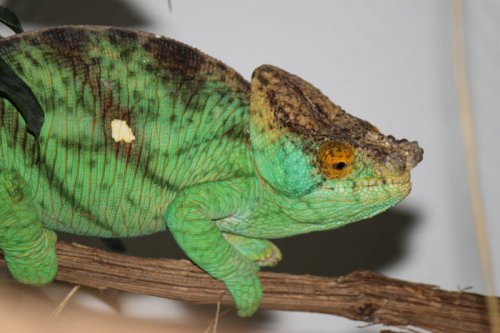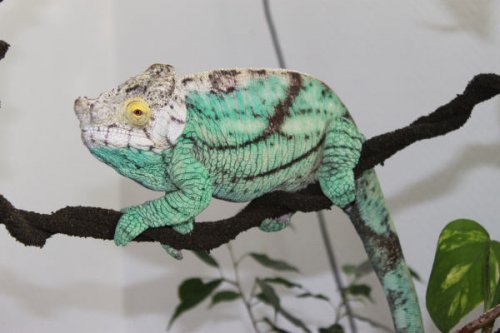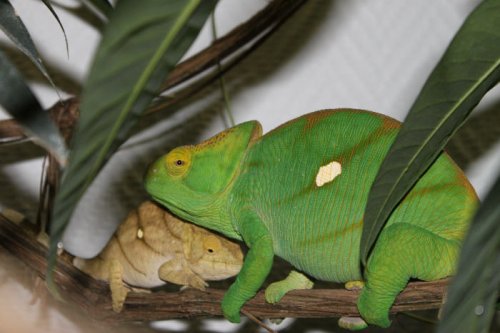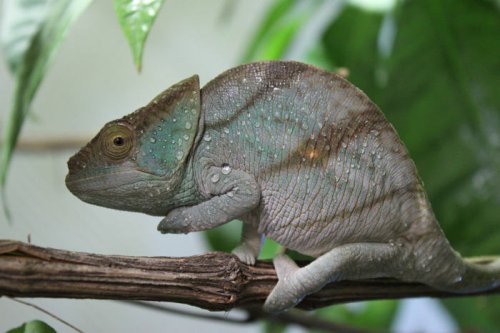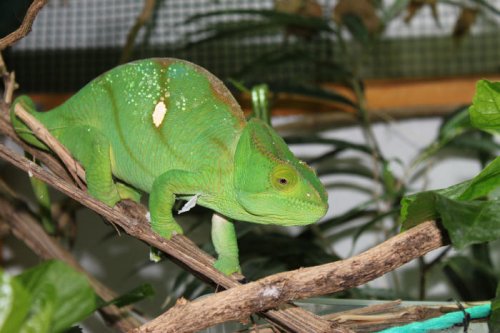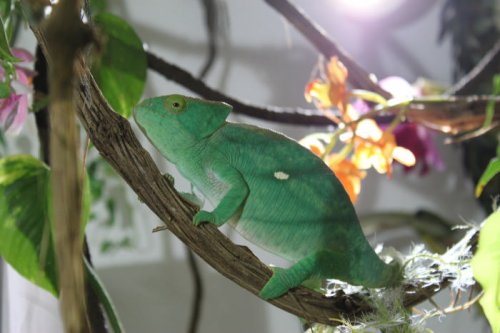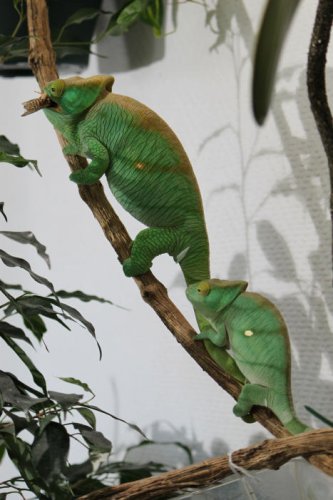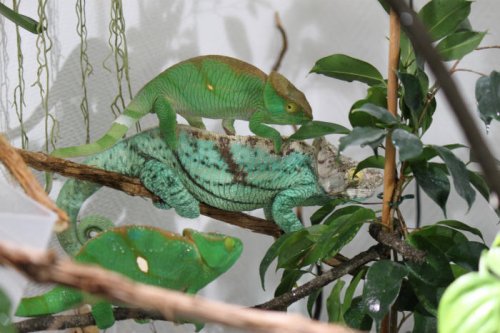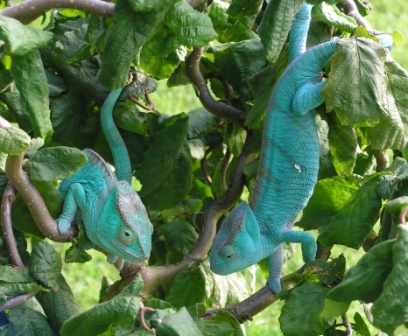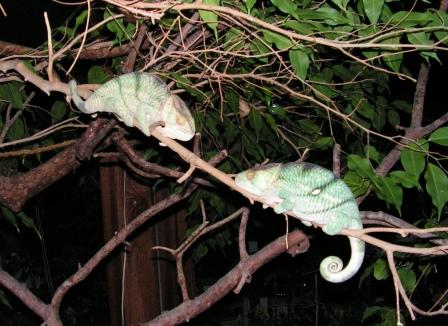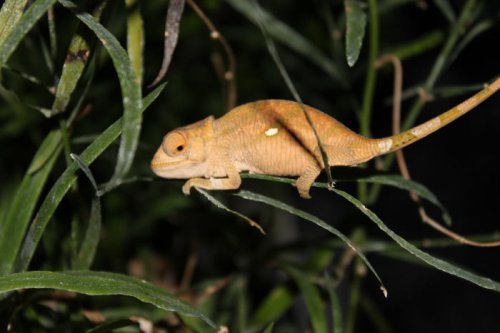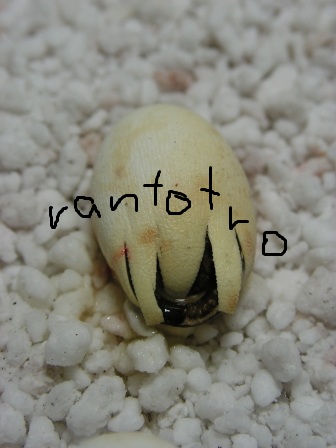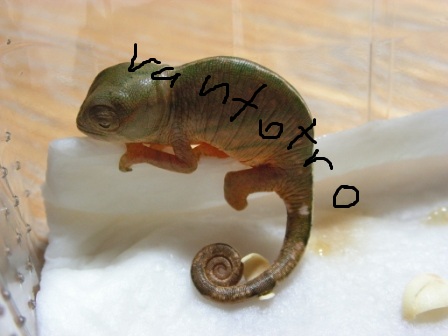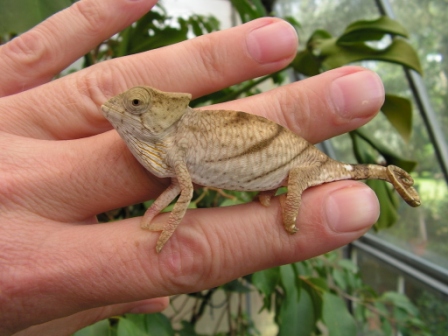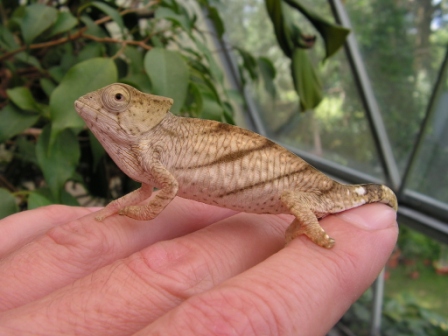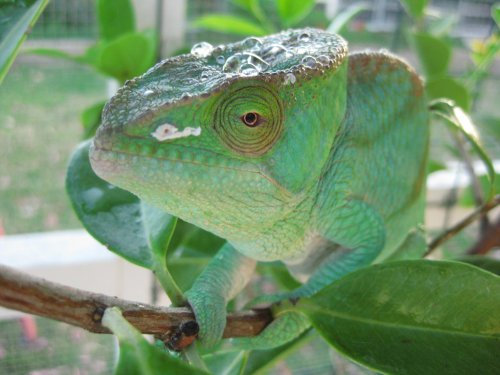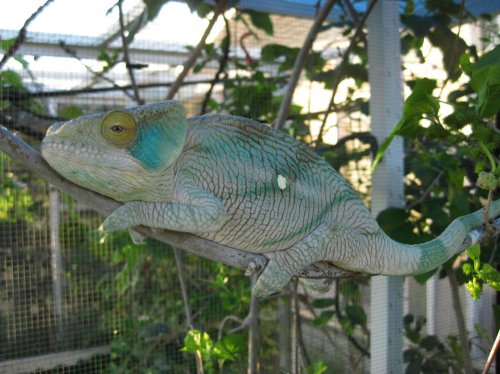Navigation
Install the app
How to install the app on iOS
Follow along with the video below to see how to install our site as a web app on your home screen.
Note: This feature may not be available in some browsers.
More options
You are using an out of date browser. It may not display this or other websites correctly.
You should upgrade or use an alternative browser.
You should upgrade or use an alternative browser.
Calumma parsonii parsonii
- Thread starter rantotro
- Start date
Action Jackson
Chameleon Enthusiast
How old are your females?
I have several male and several females who live in two spaces.
Only males intimidate.
At the moment I met no problems with females.
OldChamKeeper
Chameleon Enthusiast
I have three females. I thought I would be able to keep them together in a large outdoor cage but that is not working out.They are very territorial. I have two in a space 8'x7'x7' they stay at opposite ends and rarely move. Yesterday I put one of the females I have been keeping inside in the outdoor cage so I could move her cage and she immediately ran over and started a fight.
I will be dividing the outdoor cage and putting in a visual barrier soon.
Back when I had mine, they all had to be kept away from each other. No half measures either, visual barriers are a must bud. Gentle giants my butt however they were nothing like panthers or veileds.
I do miss my Parson's. No other animal I've ever owned was as neat and enjoyable as my old critter was.
Excellent thread, if I had more time and some money back in the 90's I'd have made it this far. I got my female to lay eggs twice but hatching them.....
Action Jackson
Chameleon Enthusiast
I didn't have any problems until about a month after I moved them outside. While inside they we're all within view of each other, even housed side by side. I now have two females housed seperately inside and one outside until I can divide my outdoor enclosure into 1/3's
opaka
New Member
3 males: 4 years, 2 years 12 months
3 females: 3 years 2 years 12 months
I see no problem with females in the same room. Finally for now
I hope a coupling for this summer, because I have a male who begins to make the parade at the oldest !!
3 females: 3 years 2 years 12 months
I see no problem with females in the same room. Finally for now
I hope a coupling for this summer, because I have a male who begins to make the parade at the oldest !!
Attachments
Chameleonmaster
Avid Member
Wow 6 parsons must take up a whole lot of space. And how old till they get to be full grown?
rantotro
Established Member
3 males: 4 years, 2 years 12 months
3 females: 3 years 2 years 12 months
I see no problem with females in the same room. Finally for now
I guess you should take a closer look to the adult female and this one who is getting adult next month. Sometimes there is an individual harmony between females, especially when they are young. But this can change when the mating time or pregnancy is coming.
Are you sure about these ages exactly ?
Attachments
rantotro
Established Member
I have written the answer to your question in this thread on 07 june 2012 but we should coming back to the mating of Heike and Winfried in August 2010 on the first photo of this thread.
Heike has needed from end of August to 26th January 2011 for her pregnancy. Then she has laid her 42 eggs and this was her latest egglaying in the last 6 years. I had only touch the eggs with sterile tweezers and this helps a lot against bacteria and funghus in the first 3 critical months of incubation, if you don't touch them with the fingers. These eggs are not so protected from this stuff like eggs of F.pardalis.
So on the 14th May of 2012 the first baby was born. Now it is 2 months old and has the total length of more than 12 cm.
Heike has needed from end of August to 26th January 2011 for her pregnancy. Then she has laid her 42 eggs and this was her latest egglaying in the last 6 years. I had only touch the eggs with sterile tweezers and this helps a lot against bacteria and funghus in the first 3 critical months of incubation, if you don't touch them with the fingers. These eggs are not so protected from this stuff like eggs of F.pardalis.
So on the 14th May of 2012 the first baby was born. Now it is 2 months old and has the total length of more than 12 cm.
Attachments
SSimsswiSS
Avid Member
I have written the answer to your question in this thread on 07 june 2012 but we should coming back to the mating of Heike and Winfried in August 2010 on the first photo of this thread.
Heike has needed from end of August to 26th January 2011 for her pregnancy. Then she has laid her 42 eggs and this was her latest egglaying in the last 6 years. I had only touch the eggs with sterile tweezers and this helps a lot against bacteria and funghus in the first 3 critical months of incubation, if you don't touch them with the fingers. These eggs are not so protected from this stuff like eggs of F.pardalis.
So on the 14th May of 2012 the first baby was born. Now it is 2 months old and has the total length of more than 12 cm.
Awww. My birthday to. Albeit 40+ years ago.
That baby is adorable. I wish I could come to Germany and see your baby parsonii.
I agree they are so cool looking . I hope One day I will have a chance to breed my male parsonii
lumbasammler
New Member
Hi Andreas,
great thing you´d also share yiur informations in the english Forums
I really like this attitude of yours. Keep up the good work!
Did you see that the female that i just had to sell turned out to be a male?
At least that´s what i think.
In addition to her growing horns i also noticed that she got those black stripes on her head when stressed today, that i have only seen in males by now.
What do you say?
Best regards
Robin

great thing you´d also share yiur informations in the english Forums
I really like this attitude of yours. Keep up the good work!
Did you see that the female that i just had to sell turned out to be a male?
At least that´s what i think.
In addition to her growing horns i also noticed that she got those black stripes on her head when stressed today, that i have only seen in males by now.
What do you say?
Best regards
Robin
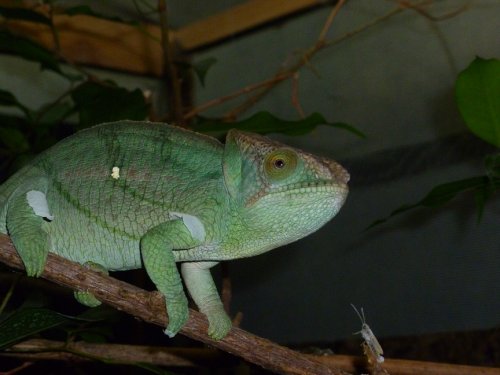
exotherm75
New Member
Robin, I agree with you. Its great that Andreas is nice enough to share his experience and photo's. WOW.
Andreas, As others have said, you have some beautiful Parson's !!!
- Tom
Andreas, As others have said, you have some beautiful Parson's !!!
- Tom
SSimsswiSS
Avid Member
Hi Andreas,
Did you see that the female that i just had to sell turned out to be a male?
At least that´s what i think.
In addition to her growing horns i also noticed that she got those black stripes on her head when stressed today, that i have only seen in males by now.
What do you say?
Best regards
Robin
View attachment 60041
Still looks very much like a female to me. Some younger females look like they have horns at the right angle. If green-female / pale white, blue-male
Attachments
Last edited:
Similar threads
- Replies
- 20
- Views
- 4K





